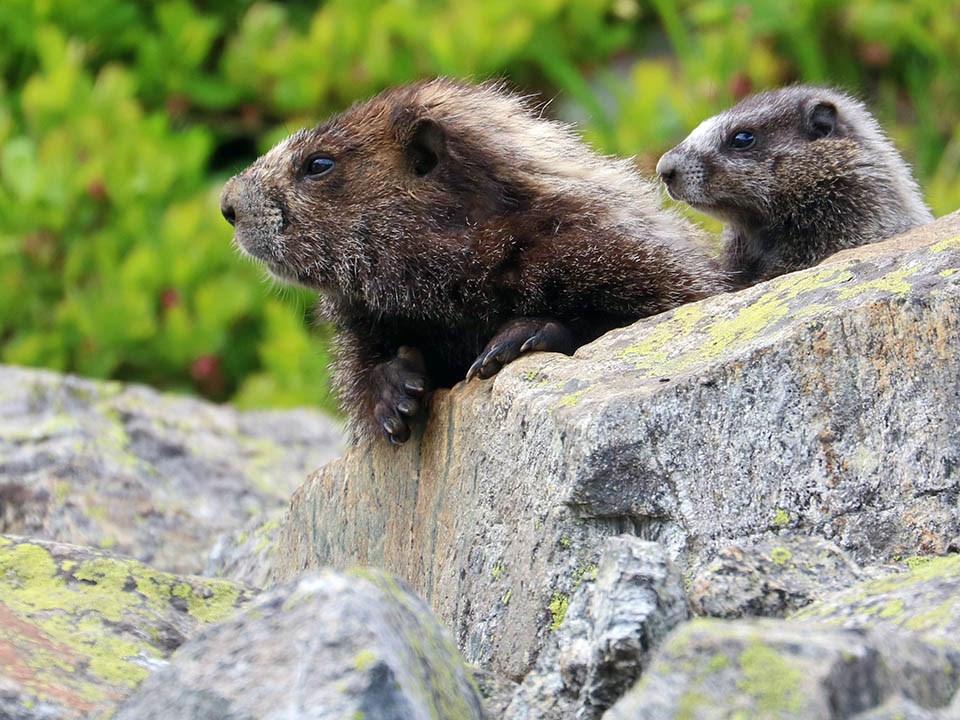Last updated: April 24, 2018
Article
Sensitivity of Marmots and Pikas to Weather Anomalies Associated with Climate Change
Climate change impacts on montane species, such as hoary marmots (Marmota caligata) and American pika (Ochotona princeps) are poorly understood. Montane ecosystems may be especially sensitive to weather anomalies because of complex abiotic and biotic interactions that arise from climate-driven reductions in snowpack.

NPS / Jason Ransom
Snowpack not only provides insulation from extreme cold, but also influences forage availability through timing of melt-off and water availability. When looking at abundance of these two species across years that included a record-low snowpack in Washington State, pika abundance declined markedly at elevations below 1,400 m, but increased slightly at higher elevations that retained snow during the low-snow winter. Pikas showed a 1-year lag response to the snowpack anomaly. This suggests a reproductive failure at low elevations following the weather anomaly, rather than direct mortality from exposure to extreme cold, in the absence of snowpack.
Marmot abundance declined by 69% between 2007 and 2016, and the most-severe losses occurred at warm, dry sites. Moisture was important in statistical models that included the interactions of vapor pressure deficit with snowpack duration (pikas) and cold exposure (marmots). These results indicate that weather extremes, warming temperatures, and increasing aridity can lead to rapid loss of species in montane ecosystems.
For More Information
Aaron Johnston, PhD
U.S. Geological Survey
Jason Ransom, PhD
National Park Service
